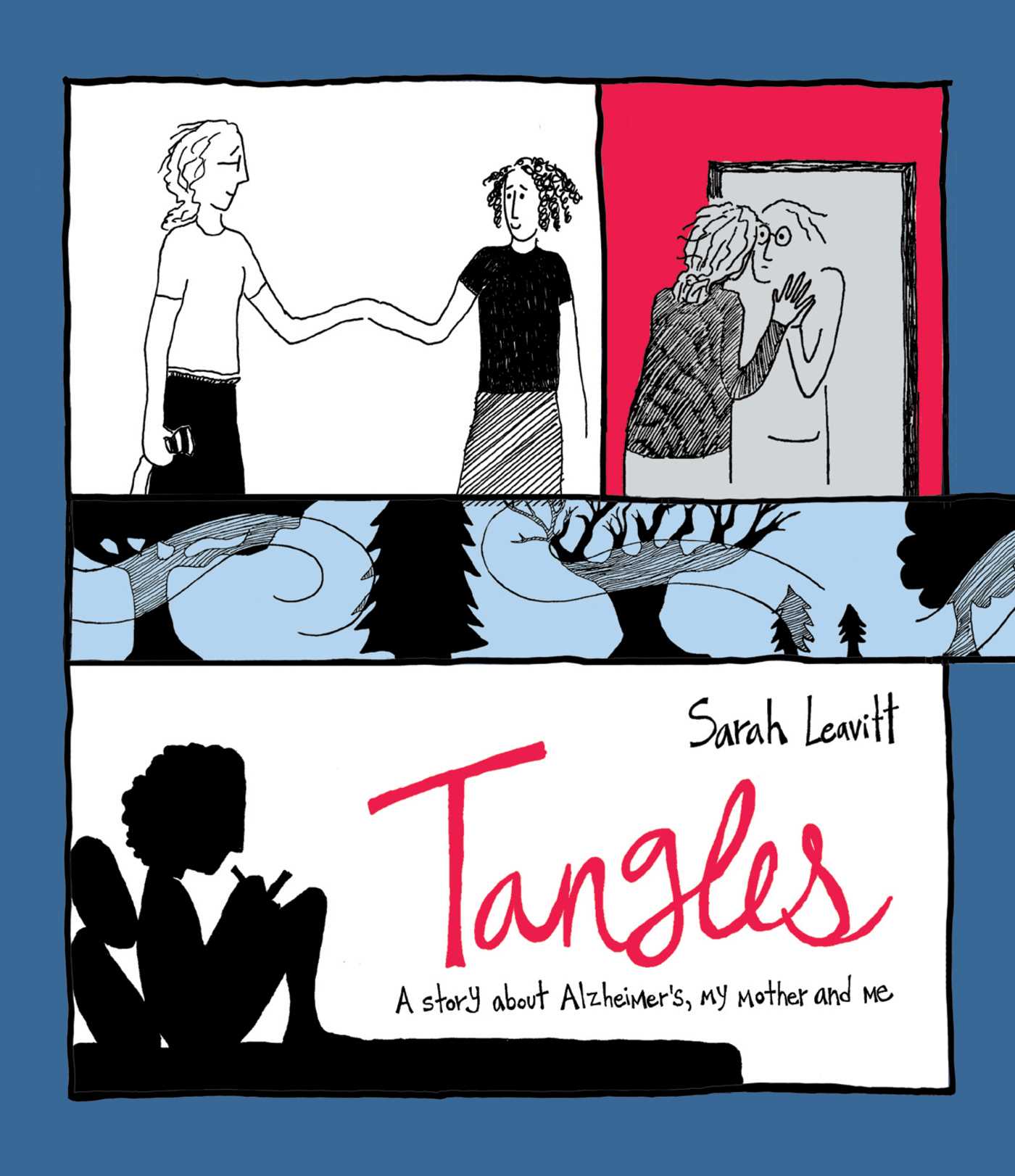

The litany of loss, ticking metronomically through each memory, becomes a march toward the inevitable destination to which not even the happiest flashback can alter the course.

The rhythm of her words reflects the reduction of her relationship with her mother to a series of lists and chores. She describes the pain as roles are reversed, as children find themselves forced to change a parent’s diaper. With something as terrible as Alzheimer’s, it’s almost impossible for the writer to communicate the extreme tragedy through words alone, and Leavitt uses the text to its full potential. Mother and daughter, wife and husband, sisters: family members’ bodies meld into each other even as one member is being taken away. As characters hug, arms connect at the wrist. Like Mary Cassatt’s pastels of children, Leavitt draws her characters with expressive faces and amorphous abstractions for hands. Visually, she creates a growing sense of isolation, loss, and distance through restrained usage of silhouettes and brilliantly placed stretches of white space. Leavitt’s story depicts her and her family at their best and their worst. In her powerful graphic memoir, Tangles: A Story About Alzheimer’s, My Mother, and Me, Sarah Leavitt shares her family’s six-year journey as Alzheimer’s reduces the mother she knew and loved into someone unrecognizable. But for family and friends witnessing the slow, inevitable destruction of a loved one, the reprieve comes only at the end. At some point, even this cognizance disappears for the victims, granting some measure of relief. While it slowly strips away memories, experiences, and personalities, it leaves victims with enough awareness to know something is terribly, and terrifyingly, wrong. 30 in the journal Nature Astronomy (opens in new tab).A Story About Alzheimer's, My Mother, and Me "So the time when this middle pressure bump formed might be a key aspect of the solar system." "By the time the pressure bump formed in those cases, a lot of mass had already invaded the inner system and was available to make super-Earths," Izidoro said. What's more, the researchers found that if they simulated the delayed formation of the middle ring, super-Earths may have formed in the solar system. The middle ring would ultimately become the planets of the outer solar system, while the outermost ring formed the comets, asteroids and other small bodies in the Kuiper Belt, the region beyond the orbit of Neptune. Dazzling photos of the solar eclipse from AntarcticaĪccording to the simulations, the nearest ring to the sun formed the planets of the inner solar system - Mercury, Venus, Earth and Mars. Totally active: Eclipse photos reveal sunspots, solar flares


 0 kommentar(er)
0 kommentar(er)
